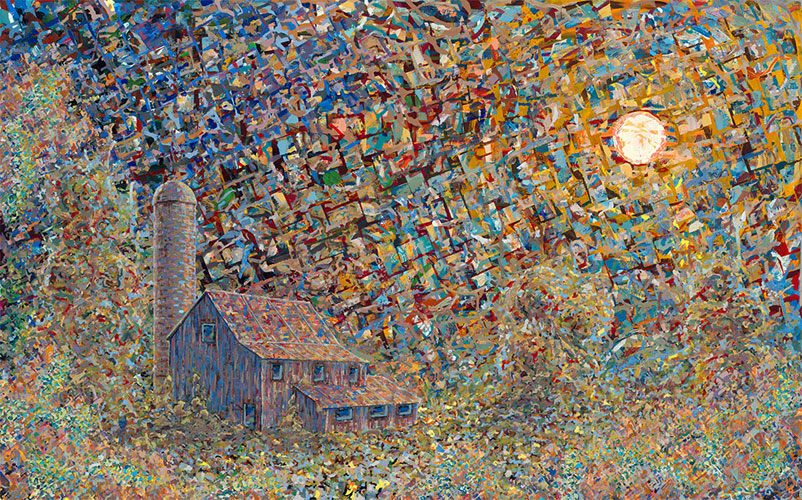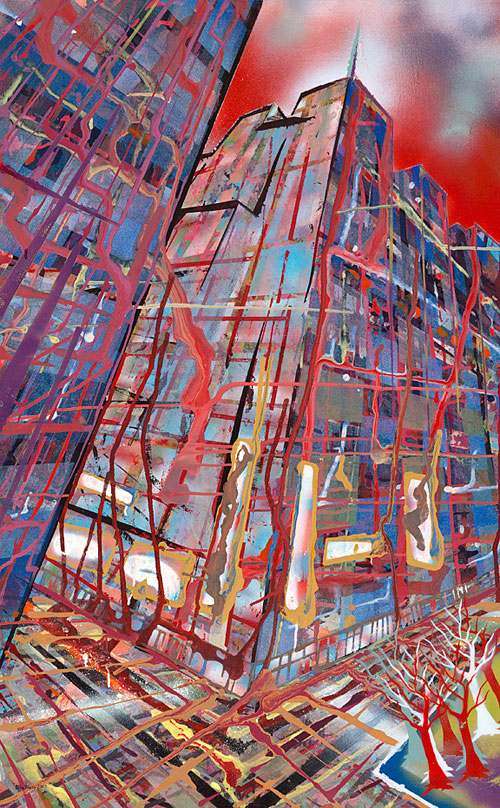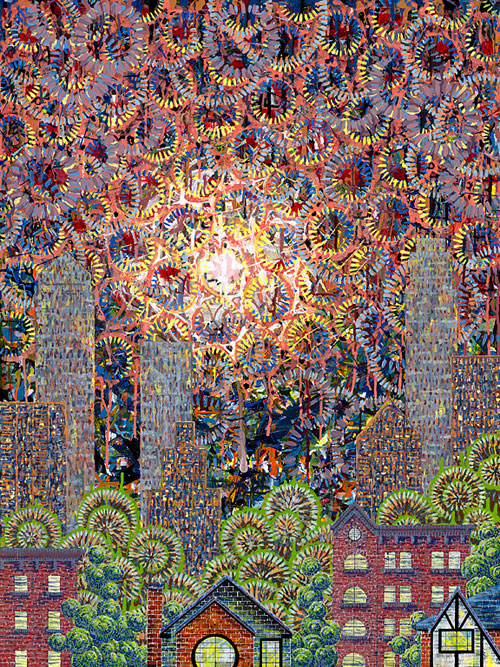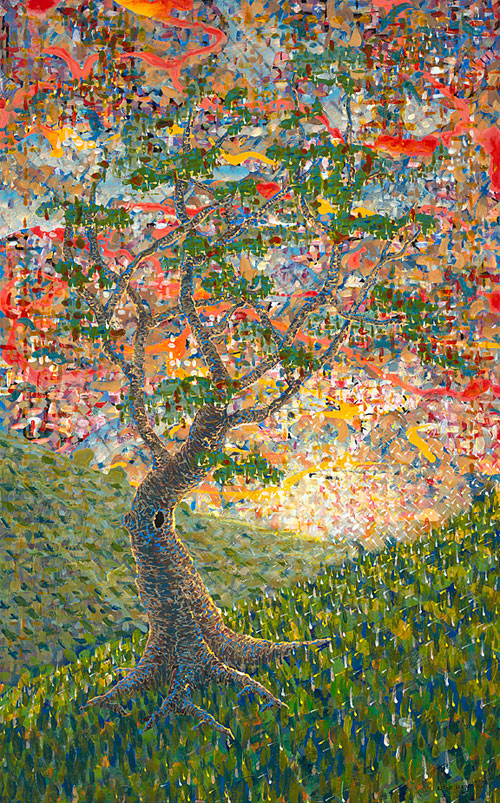Art, // January 26, 2015
John Tracy – ARTIST
Interview with artist John Tracy —
1. Who are you and what do you do?
My name is John Tracy. I am an artist living in Lancaster, Pennsylvania creating primarily large acrylic work.
 2. Why art?
2. Why art?
As a child art was a form of exploration and identification. When I drew an object or an idea I took ownership of it. I wasn’t gifted at writing nor was I celebrated for my athletic ability. However, drawing was something I felt at home doing. For as long as I can remember it has always been a comfort and a motivation.
3.What is your earliest memory of wanting to be an artist?
I can’t look back and focus on a moment that defined the want of being an artist. I was drawing all the time. In school I often remember racing through a test so I could fill up every remaining free space on the paper with art. The want has always been there.
4. What are your favorite subject(s) and media(s)?
My art is informed by landscapes and mythical representations. Both of these subjects inspire me to create something timeless, something caught in eternity. My chosen arsenal for exploring this is acrylic paint on large board.
I grew up in Lancaster County encircled by rolling hills and farms. There is an isolated beauty to this area, and one can feel the cultural pull of numerous major American cities that all lie within a few short hours. This has great influence on my landscapes. I try to invoke a sense of nostalgia by pulling images from my mind and capturing an idealized vision of my surroundings.
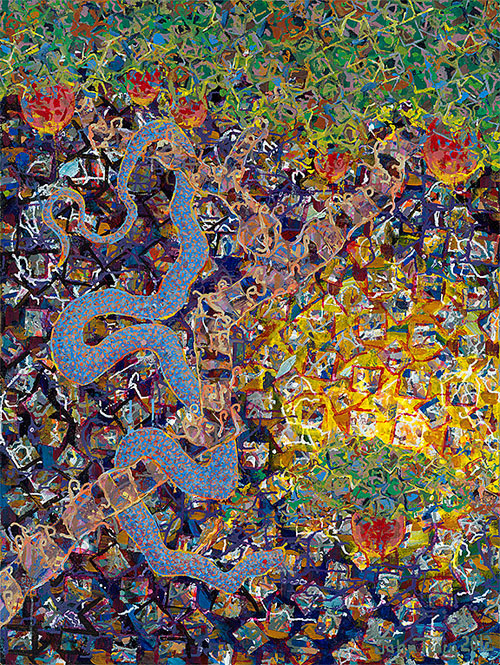
The other area of my work focuses on stories that are carried across generations. Myth is a shared dream. Regardless of belief, disbelief or culture, I find a beauty in the tales of our collective identity. There is a long tradition in depicting the mythological. The history or art is filled with works portraying stories of the gods. You see it all around the world. Western art has beautiful sculptures of the Greek and Roman gods, and then it is dominated for centuries by Christian art. Retelling these communal stories in my own visual language is a way to pay homage and connect to the masters of the past.
5. How do you work and approach your subject?
I typically work on multiple paintings at one time. Each is at a different place on its journey to completion. When I start a piece I do not have a destination. I begin in an abstract-expressionist manner. Large gestural brushes of color and splatters of paint are loosely layered on the canvas. I continue doing this and begin constructing patterns. Eventually multiple patterns weave together to create trance inducing visual noise from which I sculpt, build and translate the abstract into a representational image.
6. What are your favorite art work(s), artist(s)?
I’m fascinated by the works of the Vienna Secessionists. Gustav Klimt and Egon Schiele are amongst my favorites. I admire Klimt’s decorative and luminous use of color, and Schiele for the rawness of his work. As a whole I am also drawn towards Eastern art. The repetitive elements found in the compositions of works from Hinduism and Buddhism has echoed in my own art. On the more contemporary side of things I very much like Keiichi Tanaami.
7. What are the best responses you have had to your work?
My favorite responses are those that imply escapism. Remarks such as, “I could get lost in that for hours.”
8. What do you like about your work?
I often feel that my work is an extension of myself. I start by not knowing where I am headed. There is an act of devotion in dedicating yourself to an evolving idea and willing something beautiful or interesting into existence. I like my work when it no longer needs me and exists on its own.
9. What advice would you give to other artists?
Create. Ignore distractions. Create.
10. Where do you see yourself in 5-10 years?
I hope to be putting greater emphasis in promoting myself and my work, creating more and realizing a fuller potential.
Links —
Website: http://johntracyart.com
Facebook: https://www.facebook.com/johntracyart
Instagram: http://instagram.com/johntracyart




